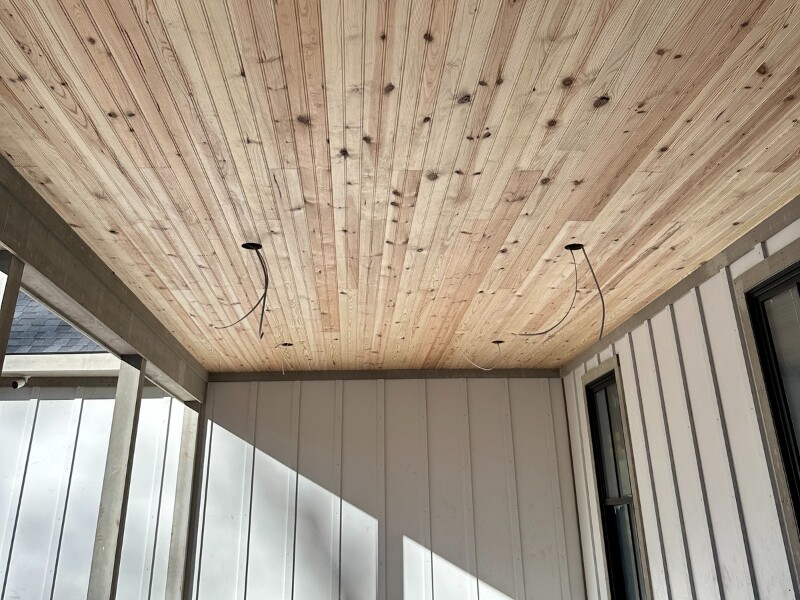When it comes to upgrading the look of your interior, installing a tongue and groove ceiling is an elegant choice. However, it’s essential to consider the cost, specifically the tongue and groove ceiling cost per square foot. In this article, we’ll break down the factors that influence this cost, helping you make an informed decision for your home improvement project.

Understanding Tongue and Groove Ceilings
Before we dive into the details of cost, let’s establish what a tongue and groove ceiling is. This type of ceiling features individual planks with an interlocking system, where the “tongue” of one plank fits into the “groove” of the adjacent plank. This creates a seamless, visually appealing surface that is often used to add a touch of warmth and character to a room.
Material Costs
The first and most significant factor in determining the tongue and groove ceiling cost per square foot is the cost of materials. Tongue and groove ceiling planks come in various materials, with different price points. The most common materials include:
- Pine: Pine is a popular and budget-friendly choice for tongue and groove ceilings. It offers a warm, rustic look and is relatively affordable.
- Cedar: Cedar is a durable and aromatic wood that can be used for tongue and groove ceilings. It’s typically more expensive than pine but offers unique benefits.
- Redwood: Redwood is a premium option for a tongue and groove ceiling, known for its durability and rich color. It is one of the more expensive choices.
- MDF (Medium Density Fiberboard): For a more budget-friendly option, some homeowners choose MDF planks. These engineered wood planks are typically lower in cost but may not have the same natural wood appeal.
The choice of material can significantly affect the overall cost. Keep in mind that the quality and finish of the material will also influence pricing.
Labor Costs
The installation of a tongue and groove ceiling is labor-intensive and will incur costs. Labor costs can vary widely depending on factors such as your location, the complexity of the project, and the expertise of the professionals you hire.
- Complexity: The complexity of the project can influence labor costs. If your ceiling has intricate details, is uneven, or requires additional structural work, expect higher labor costs.
- Experience: Experienced contractors may charge more for their expertise, but their skills and precision can result in a more polished finished product.
- Location: Labor rates can vary based on the cost of living in your area. In regions with a higher cost of living, you can expect higher labor costs.
Finishing and Detailing
The level of finishing and detailing you desire for your tongue and groove ceiling will impact the cost per square foot. For example, if you plan to have the planks stained or painted, this will require additional time and effort, leading to increased costs. Additionally, if you want to incorporate intricate patterns or other decorative features, this will also affect the overall price.
Ceiling Height and Size
The dimensions of your ceiling directly affect the cost. Ceilings with greater height or larger surface areas will naturally require more material and labor, resulting in a higher cost per square foot.
Installation Method
The method used to install the tongue and groove ceiling can also impact the cost. Two common installation methods are:
- Blind Nailing: In this method, nails are driven through the tongue of each plank, hiding the nail heads from view. This technique is more time-consuming but creates a seamless appearance.
- Face Nailing: With face nailing, nails are driven through the face of each plank, which is visible after installation. This method is faster but may not be as aesthetically pleasing.
Your choice of installation method will influence both labor costs and the final look of your ceiling.
Additional Costs
When budgeting for your tongue and groove ceiling, remember to account for additional costs, such as insulation, underlayment, and any structural modifications needed to support the new ceiling.
Conclusion
A tongue and groove ceiling can be a beautiful addition to your interior space, adding warmth and character. The cost per square foot for this project is influenced by several factors, including material costs, labor costs, finishing and detailing, ceiling height and size, installation method, and additional costs. To obtain an accurate estimate for your project, it’s advisable to consult with experienced contractors and obtain multiple quotes. By considering these factors and planning accordingly, you can enjoy the elegance of a tongue and groove ceiling while staying within your budget.